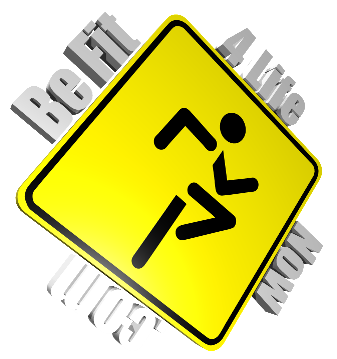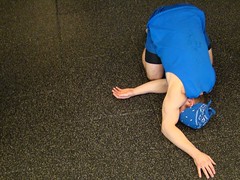Constant stress and poor nutrition can weaken the adrenal glands. Without intervention, this could result in a weakened immune system, fatigue, low blood sugar, and an overall run down feeling. Check out our blog to see how you can fight adrenal fatigue and then sign up to get started on an exercise and nutrition plan from BeFit4LifeNow to help make sure you find that life and vitality you've been missing!

In addition to helping you handle stress, these two primary adrenal hormones, adrenaline and cortisol, along with others similarly produced, help control body fluid balance, blood pressure, blood sugar, and other central metabolic functions. In the heightened nervous state of adrenal burnout, the body overproduces adrenaline, cortisol and other stress hormones. Constant stress and poor nutrition can weaken the adrenal glands. Eventually, this causes the adrenal glands, the front line in the stress reaction, to show wear and tear and become depleted. This frequently leads to impairment in the thyroid gland, which can cause a further decline in energy level and mood and is one of the reasons why many people have thyroid glands that don’t work well.
When stress continues over prolonged periods of time, the adrenal glands can deplete the body's hormonal and energy reserves, and the glands may either shrink in size or hypertrophy (enlarge). The overproduction of adrenal hormones caused by prolonged stress can weaken the immune system and inhibit the production of white blood cells that protect the body against foreign invaders (in particular lymphocytes and lymph node function). Adrenal dysfunction can disrupt the body's blood sugar metabolism, causing weakness, fatigue, and a feeling of being run down. It can also interfere with normal sleep rhythms and produce a wakeful, unrelaxing sleep state, making a person feel worn out even after a full night's sleep.
Common Causes of Adrenal Stress:
• Anger
• Fear / Worry /Anxiety
• Depression
• Guilt
• Overwork/ physical or mental strain
• Excessive exercise
• Sleep deprivation
• Light-cycle disruption
• Surgery
• Trauma/injury
• Chronic inflammation
• Chronic infection
• Chronic pain
• Chronic illness
• Chronic-severe allergies
• Hypogycemia
• Nutritional deficiencies
Testing for Adrenal Health:
In order to determine the health of your adrenal glands you need to have a simple blood, urine, or saliva test such as the Adrenal Stress Index performed through your practitioner. Cortisol levels can be checked by blood in the morning or throughout the day by a saliva test. DHEA, and Epinephrine, are some other indicators of adrenal function.The information provided by testing can help to determine the most appropriate type of treatment.
Lifestyle changes such as:
Eating steadily, all day long. Skipping meals is one of the worst things you can do for your body. When you're hungry, your blood sugar drops, stressing your adrenal glands and triggering your sympathetic nervous system. That causes light-headedness, cravings, anxiety and fatigue. Another drawback to skipping meals: The resulting low blood sugar can affect your ability to think clearly and shorten your attention span.
Skipping breakfast is particularly bad, as it is a sure fire way to gain, not lose, weight. If you start each morning with a good breakfast and "graze" healthfully every two to four hours, your blood sugar will remain steady throughout the day. You'll feel more rested and energetic. Eat protein with every meal. Eat Complex carbohydrates such as brown rice. Avoid sugar, junk food, white pasta, white rice, white bread. Absolutely NO Caffeine. Coffee/Sodas over stimulates your adrenals and they deplete important B vitamins. Coffee does not give you energy; coffee gives you the illusion of energy. Coffee actually drains the body of energy and makes you more tired, because of vitamin and adrenal depletion.
Exercise to relax. Walking, Yoga, deep breathing, meditation, or stretching. No vigorous or aerobic exercise, which depletes the adrenals. Avoid alcohol, processed foods, and tobacco. Nicotine in tobacco initially raises cortisol levels, but chronic use results in low DHEA, testosterone, and progesterone levels. Reduce stress; learn relaxation techniques such as deep breathing, visualization, progressive muscle relaxation.
Helpful Supplements
The use of small amounts of natural adrenal hormone (hydrocortisone) to bring slightly low adrenal function up to its proper normal daily range is often helpful.
Take a daily multivitamin to provide nutritional support to the adrenal gland.
Vitamin C 1,000-3,000 mg a day
L-Theanine 100-400 mg a day
Pantothenic Acid (Vitamin B5) 300 mg a day
Licorice (Glycyrrhiza glabra), no more than 1000 mg of glycyrrhizin
By: Valerie Balandra ARNP, BC




 .
.



















